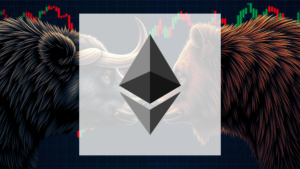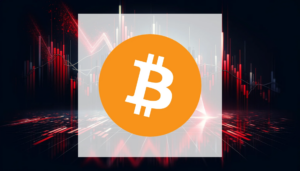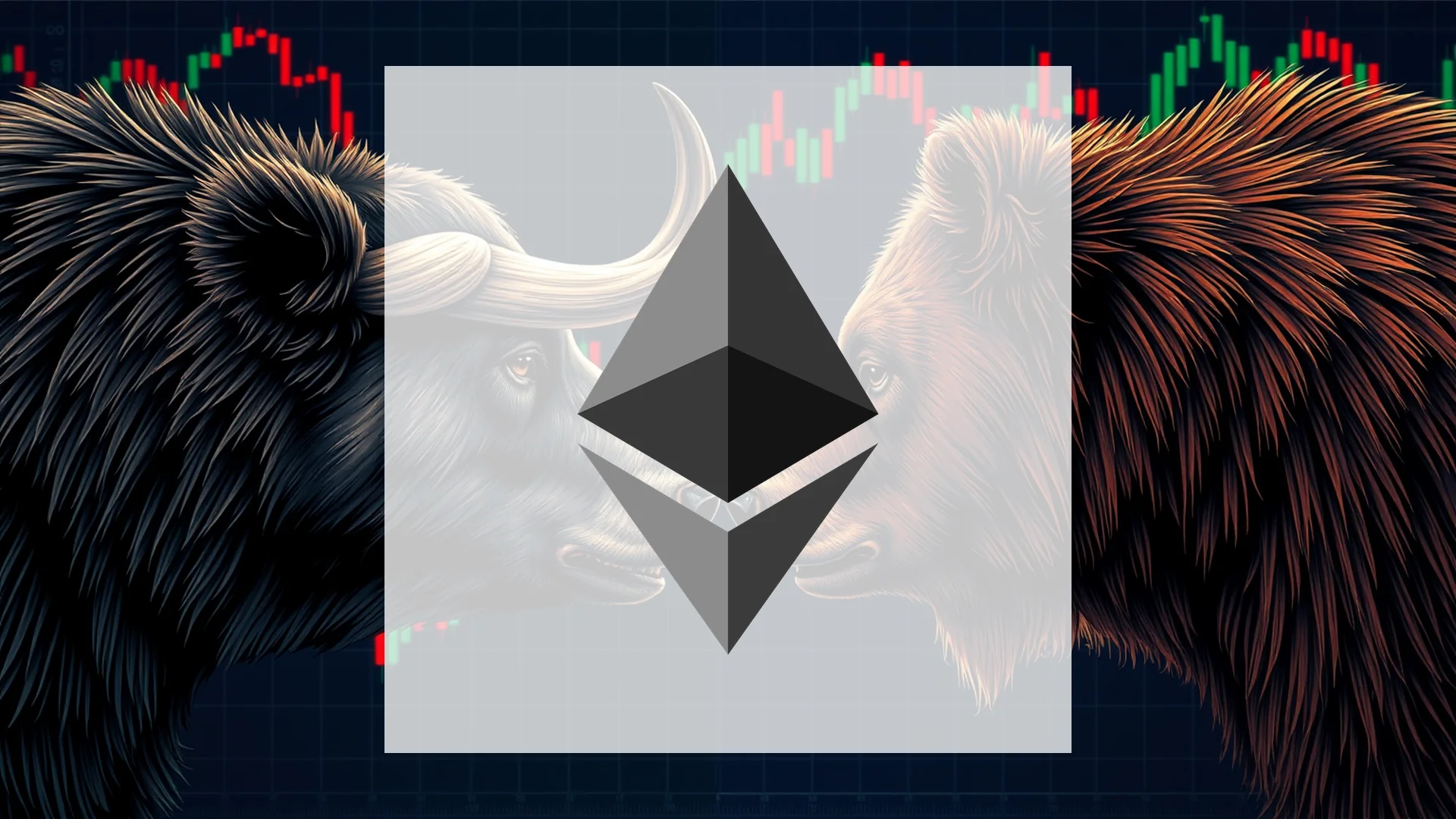Ethereum’s Foundation Strengthens Amid Market Uncertainty
As 2025 draws to a close, Ethereum presents a study in contrasts. While its price struggles to gain upward momentum, underlying network metrics—from adoption and staking to a clear development roadmap—paint a picture of sustained growth. This divergence creates a market that appears fragile in the short term yet demonstrates surprising fundamental resilience.
Development Roadmap: Scaling Takes Center Stage
On the technical front, Ethereum’s core developers continue to execute a long-term expansion plan. During the All Core Developers Call on December 19, the upgrade slated for the second half of 2026 was officially named: “Hegota.”
Scheduled to follow “Glamsterdam” in early 2026, Hegota will merge the “Bogota” (Execution Layer) and “Heze” (Consensus Layer) upgrades. The initiative is centered on three primary objectives:
-
Verkle Trees Implementation
This feature is a leading candidate for inclusion. Its purpose is to substantially reduce the storage requirements for nodes, enabling the operation of “stateless clients.” This advancement would simplify node operation and reinforce network decentralization. -
Throughput Capacity Scaling
Plans involve tripling the network’s gas throughput from 20 to 60 megagas per second. Increased capacity is designed to support more transactions and more complex applications at a lower cost. -
Predictable Upgrade Cadence
The timing for Hegota in late 2026 reaffirms a semi-annual upgrade schedule. The focus remains squarely on resolving storage bottlenecks and throughput limitations—two critical constraints for a expanding DeFi and dApp ecosystem.
This steady progress signals that near-term price action is not hindering technical advancement. The roadmap is fundamentally about laying the groundwork for significantly higher network usage.
On-Chain Metrics Hint at Supply Squeeze
Contrasting with the sluggish price performance, on-chain data suggests a tightening supply dynamic is underway.
- Since early December, approximately 397,000 ETH have been withdrawn from centralized exchanges—a movement representing billions in value.
- More than 30% of the total supply (roughly 35.6 million ETH) is now locked in staking contracts.
- The weekly count of active addresses recently fell to a monthly low.
- Simultaneously, the creation of new wallets has surged, peaking at nearly 200,000 new addresses per day.
- The total number of non-empty ETH wallets now stands at around 168 million, a figure notably higher than Bitcoin’s.
Exchange outflows and increased staking activity remove liquidity from the readily available market supply. While this reduces immediate sell-side pressure, it does not automatically translate to higher prices in the short term, especially when leveraged derivatives positions dominate price discovery. The lower activity from existing addresses coupled with rapid wallet growth implies many new participants are accumulating assets rather than actively trading.
Price Action and Leverage Risks
Ethereum is currently defending key support levels but remains trapped below the psychologically significant $3,000 mark. Trading has been largely range-bound in recent weeks, even as the broader cryptocurrency market exhibited more dynamism.
The asset registers a weekly decline of approximately 8% and a nearly 5% drop over a 30-day period. Although now well below its 52-week high, it remains noticeably above its annual low. Technically, the zone around $2,762 is viewed as crucial support; a sustained break below this level could trigger more pronounced downward moves.
Conditions in the derivatives market are particularly sensitive. On Binance, the Estimated Leverage Ratio (ELR) hit a record level on December 19, while the Taker Buy/Sell Ratio simultaneously remained above 1. This indicates a large number of market participants are positioned with high leverage for price gains. Historically, such setups are prone to abrupt corrections if cascading liquidations are triggered.
Institutional Flows and Sentiment Shifts
Institutional activity presents a mixed picture as the year ends:
- U.S. spot Ethereum ETFs have recorded six consecutive trading days of net outflows since mid-December, totaling roughly $630 million. This points to risk reduction or portfolio rebalancing among institutional investors.
- Conversely, publicly-listed crypto companies like BitMine Immersion Technology are reporting significant ETH holdings on their balance sheets—in this case, nearly 4 million ETH. This underscores that crypto-native entities continue to view Ethereum as a strategic asset.
Overall market sentiment improved from “negative” in November to “neutral-positive” by mid-December. However, this shift in mood is meeting a market characterized by high leverage, where optimism can quickly turn to selling pressure if key support levels fail.
Conclusion: Near-Term Caution, Long-Term Conviction
Ethereum finds itself at a critical juncture. The confluence of high leveraged speculation, a clearly defined support level near $2,762, and persistent resistance at $3,000 makes the market vulnerable to sharp directional changes. Yet structural factors—substantial exchange withdrawals, growing staking participation, explosive wallet growth, and an ambitious upgrade timeline with Hegota—continue to support a robust fundamental narrative.
The coming months will likely reveal whether a decisive break above $3,000 can align price with underlying strength, or if a necessary deleveraging event in the derivatives market must occur first before the next sustained trend can emerge.
Bitcoin Faces Pivotal Test as Billions in Options Expire
The cryptocurrency market has entered a phase of consolidation following October’s rally, with Bitcoin currently trading approximately 30% below its all-time high. As major institutions issue wildly optimistic long-term forecasts, short-term tension is mounting ahead of a critical market event. Investors are now questioning whether prices will stabilize or if structural pressures will trigger a deeper correction.
A $23 Billion Catalyst for Volatility
All eyes are fixed on Friday, December 26th, when Bitcoin options contracts with a notional value of roughly $23 billion are set to expire. This staggering sum represents over half of the total open interest across major derivatives exchanges. Market analysts highlight a concerning concentration of put options—bets on a price decline—centered around the $85,000 strike price. This level could act as a powerful magnet in the coming sessions, potentially fueling significant price swings.
The leading digital asset is currently attempting to establish a price floor, trading at $87,769.00. Surprisingly, recent U.S. inflation data, which came in at a better-than-expected 2.7%, failed to provide sustained momentum. This muted response is largely attributed to substantial outflows from Bitcoin spot ETFs, which saw net withdrawals of about $161 million on December 18th alone.
Diverging Institutional Signals
The landscape presents a stark contrast between immediate risks and long-term potential. In a notably bullish report dated December 19th, Citigroup set a twelve-month price target of $143,000 for Bitcoin. The bank’s strategists base this projection on anticipated annual ETF inflows reaching $15 billion.
Countering this optimism is a tangible regulatory risk from financial services firm MSCI. The index provider is currently reviewing whether to exclude companies holding more than half their assets in digital currencies from its global indices. A final decision is expected by January 15, 2026. Should this proposal pass, it could force passive funds to divest shares of crypto-centric firms like MicroStrategy, potentially stripping the ecosystem of up to $9 billion in indirect demand.
Technical Indicators and Future Drivers
On-chain metrics suggest a cooling period may be underway. Researchers at CryptoQuant point to signs that the demand waves which characterized much of 2025 have temporarily subsided. If the present correction continues, the zone around $70,000 is viewed as the next crucial macroeconomic support level.
A positive development emerges from the infrastructure side: the integration of native Bitcoin into the widely-used MetaMask wallet is expected to lower entry barriers for millions of users. This integration could rejuvenate network activity by the first quarter of 2026.
Despite prevailing anxiety among retail investors, as reflected in recent surveys, prominent market voices remain steadfast. Arthur Hayes forecasts a trading range between $80,000 and $100,000 through year-end. He further anticipates a recovery toward $200,000 in early 2026, driven primarily by central bank liquidity policies.
Ethereum’s Core Strength Endures Amid Market Volatility
As December 2025 draws to a close, Ethereum faces persistent challenges in reclaiming the $3,000 threshold. While short-term sentiment is clouded by uncertainty and profit-taking, a deeper analysis of long-term metrics reveals a contrasting narrative. Beneath the surface price action, evidence suggests the network is experiencing robust usage, ongoing expansion, and a structural reduction in available supply—all despite weaker spot prices.
Technical Landscape and Sentiment Analysis
Ether is currently trading near $2,965, a level notably below its 52-week high, which was approximately one-third higher. The asset registers a weekly decline, partly attributed to cautious market sentiment following the latest Federal Reserve meeting.
The $3,000 level continues to act as a significant psychological and technical resistance point. Recent attempts to breach it have been met with selling pressure. Technical indicators, including its position relative to the 50-day moving average and a neutral Relative Strength Index (RSI), suggest a market under strain but not in oversold territory.
Despite the price correction, the overarching mood within the Ethereum community remains surprisingly constructive. Community surveys indicate a prevailing optimism that the current weakness represents a temporary phase rather than a fundamental trend reversal.
On-Chain Fundamentals Point to Supply Squeeze
Exchange Balances Hit Multi-Year Low
On-chain data supports this underlying confidence. Since the start of the month, nearly 400,000 ETH, valued at over $1 billion, have been withdrawn from centralized exchanges. Such movements typically signal that investors are opting for long-term holding or staking strategies over immediate selling.
Data from CryptoQuant reveals that the proportion of Ether supply held on exchanges has fallen to its lowest level since 2016. Approximately 16.2 million ETH remain on trading platforms, with the Exchange Supply Ratio dropping to around 0.137. This sustained contraction in exchange reserves, ongoing since mid-2024, reduces immediately sellable supply and could act as a catalyst for recovery when demand rebounds.
Network Adoption Continues Unabated
Concurrently, Ethereum network usage remains elevated. More than 167 million addresses currently hold an ETH balance—a figure substantially higher than Bitcoin’s—highlighting its broad utility for DeFi, NFTs, and smart contract applications.
A particularly striking trend is that 2025 has seen the highest rate of new wallet creation on an annualized basis, with an average of roughly 163,000 new addresses added daily. This continued influx of new users into the ecosystem, even amid price pressure, points to enduring confidence in its technological foundation.
Protocol Development Advances Scaling Roadmap
Fusaka Upgrade Implements PeerDAS
December also saw progress at the protocol level with the activation of the Fusaka upgrade, the year’s second major update. Its centerpiece is PeerDAS (Peer Data Availability Sampling). This innovation allows validators to sample segments of data blocks rather than verifying them in their entirety, reducing bandwidth requirements, alleviating infrastructure strain, and prospectively lowering costs for validators and Layer-2 networks.
The core implication is that Ethereum is directly addressing key scaling challenges. Reduced load on the base layer creates capacity for more transactions and potentially lower fees—a critical factor for DeFi applications and rollups.
Future Upgrades: Glamsterdam and Hegota
During the final Core Developer call of the year, developers outlined the roadmap for 2026. The next upgrades, named “Glamsterdam” and “Hegota,” are scheduled to follow throughout the coming year. Both continue the rollup-centric approach, targeting further gains in efficiency and scalability.
In a related development, the Ethereum Foundation published an analysis on state management and data storage. Proposed concepts like state expiry and archival solutions aim to prevent the network state from becoming unwieldy over the long term, representing another essential component for multi-year scaling.
Institutional Flows and Market Structure
ETF Outflows Contrast with Growing Interest
Institutional activity in December has been mixed. U.S. spot Ethereum ETFs recorded outflows exceeding half a billion dollars this week. These withdrawals have contributed to short-term selling pressure and likely played a role in the current period of weakness.
Simultaneously, fundamental interest from major financial institutions in Ethereum appears to be growing. Reports suggest global banks are preparing to expand their engagement with Ether, developing related products and infrastructure solutions. Proponents view this as validation of Ethereum’s role as a foundational platform for future institutional Web3 applications.
Whale Wallet Movements
At the wallet level, a transaction by BitMEX co-founder Arthur Hayes drew market attention. He transferred approximately 500 ETH, worth around $1.5 million, to Galaxy Digital. While some observers speculated about selling intentions, Hayes maintains a significantly larger Ether position and has recently expressed a positive long-term view on Ethereum’s institutional role. The movement thus appears more akin to tactical portfolio management than a strategic departure.
Price Action and Critical Levels
Key Support and Resistance Zones
From a chart perspective, a support zone around $2,760 remains crucial, having held on multiple occasions in recent weeks. A decisive break below this level could open the door to deeper corrections and darken the short-term outlook.
On the upside, the $3,000 mark remains the primary hurdle. Beyond that, further resistance is anticipated near $3,100 and $3,300. A convincing breakout above $3,000 would be interpreted as a signal of returning market participant confidence, potentially reopening a path toward longer-term moving averages.
Underlying Market Structure
Although an upward trendline from November has been broken to the downside—increasing near-term uncertainty—the weekly chart continues to show a pattern of higher lows. This suggests the broader market structure has not been fundamentally impaired. The present price action can therefore be interpreted as a correction within a still-intact environment, though confirmation through the recapture of key levels is pending.
DeFi and Layer-2 Ecosystem Shows Resilience
Network Revenue and Capital Flows
Despite lower Layer-1 transaction fees, application revenue on Ethereum has remained stable at approximately $80 million per month. This implies that value creation is increasingly migrating to Layer-2 solutions—precisely the objective of the rollup-centric roadmap.
The Total Value Locked (TVL) in Ethereum-based DeFi protocols has risen from 25 million to 31 million ETH in 2025. Over the same period, monthly trading volumes on decentralized exchanges climbed from $67 billion at the end of 2024 to $86 billion. The market capitalization of Stablecoins on Ethereum also grew from $111 billion to $166 billion. These figures indicate substantial capital inflows and robust network utilization.
Curve Finance Consolidates DeFi Leadership
Within the DeFi sector, Curve Finance has solidified its position as a leading Ethereum-based DEX, now accounting for roughly 44% of the fee share among decentralized exchanges. The high concentration of DeFi activity on Ethereum overall reinforces the chain’s claim as the central platform for decentralized financial applications.
Conclusion: Near-Term Turbulence, Solid Foundation
Entering the end of 2025, Ethereum exists in a state of tension. Its price sits below previous highs, the $3,000 level poses a stubborn resistance, and ETF outflows apply short-term brakes. Yet, on-chain data tells a different story: historically low exchange balances, an expanding user base, rising DeFi metrics, and successful protocol upgrades all point to a stable and strengthening foundation.
The current market trajectory primarily reflects broader risk aversion and interest rate concerns rather than structural weaknesses within the Ethereum ecosystem. The key question for the start of 2026 will be whether the combination of tightening supply, progressive scaling, and institutional interest translates into sustained price stabilization above critical support levels in the coming weeks.










Institutional Capital Flows Defy Market Pressure on Solana
Amidst a broad sell-off across cryptocurrency markets, Solana’s price has faced significant downward pressure. However, this surface-level view obscures a compelling divergence in investor behavior. While major assets like Bitcoin and Ethereum are experiencing capital outflows, institutional players are increasingly allocating funds to Solana, suggesting a potential rotation into the altcoin.
ETF Data Reveals a Strategic Shift
Recent flows for exchange-traded funds (ETFs) highlight a stark contrast. On Friday, Bitcoin and Ethereum ETFs recorded net outflows of approximately $158 million and $76 million, respectively. In a clear counter-trend, Solana-focused ETFs attracted a net inflow of $3.5 million.
Market observers interpret this movement as a sign of professional portfolio diversification. Capital appears to be shifting from the established market leaders toward altcoins with robust transaction volumes and use cases. This thesis is further supported by market liquidity dynamics. Notably, the withdrawal of over 48,000 SOL (valued at roughly $6.15 million) by a major investor, or “whale,” from the OKX exchange failed to trigger a panic-driven price collapse, indicating strong underlying market absorption capacity.
Corporate Adoption as a Treasury Asset
Adding to the vote of confidence, corporate entities are beginning to integrate Solana into their balance sheets. The company Mangoceuticals (MGRX) has announced a strategy to invest $100 million in the cryptocurrency. This initiative extends beyond passive holding as a treasury reserve.
The plan involves actively managing the position through staking and utilizing decentralized finance (DeFi) protocols within the Solana ecosystem to generate yield. This approach validates Solana not merely as a speculative asset but increasingly as a productive component of corporate financial strategy.
Price Action Contrasts with Fundamental Sentiment
Despite these positive fundamental developments, Solana’s market price reflects the prevailing uncertainty across digital assets. Currently trading at $119.47, the token established a new 52-week low on Friday. Its performance over a 30-day window shows a decline of approximately 15%.
Analyst projections for Solana’s medium-term trajectory present a divided outlook:
* The Bear Case: Fundstrat’s Tom Lee, in his 2026 outlook, warns of a potential correction in the first half of the year that could push prices into a range between $50 and $75.
* The Bull Case: In contrast, projections from AI-driven models forecast a recovery, with a price target reaching up to $173 by the end of 2025, based on technical analysis.
Conclusion: A Market at an Inflection Point
Solana currently presents a dichotomy. Its price has fallen to an annual low in tandem with the broader market downturn. Simultaneously, ETF inflow data and corporate adoption signals point to growing institutional interest. This divergence between price performance and “smart money” flows may indicate that strategic investors are already leveraging current price levels to establish long-term positions.